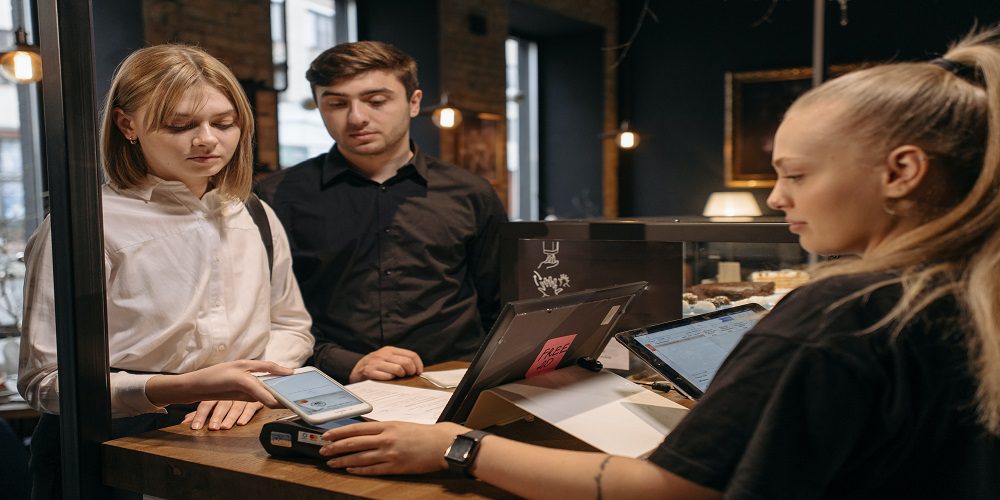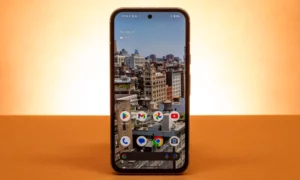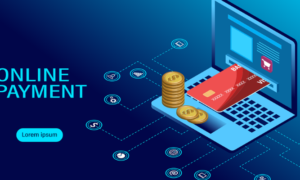Are you tired of fumbling for your wallet, counting out exact changes, or worrying about germs on the payment terminal? Luckily, contactless payment technology has arrived to revolutionize the way we make transactions. Join us as we dive into the advantages and possibilities that lie within this futuristic form of payment. From increased security to convenience at your fingertips, discover why contactless payment is shaping up to be the future of payments in our latest blog post!
Introduction
Since the COVID-19 pandemic began, there has been a surge in the use of contactless payments. According to a report from Juniper Research, the value of contactless payments is expected to reach $1.5 trillion by 2024. This represents a compound annual growth rate (CAGR) of 28%.
There are many advantages to using contactless payments, including:
1. Increased convenience – Contactless payments are more convenient than traditional methods such as cash and cheques. They can be used for small transactions without the need to fumble for change or sign a receipt.
2. Greater security – Contactless payments are more secure than cash as they cannot be lost or stolen. In addition, if your card is lost or stolen, you can cancel it and get a replacement immediately.
3. faster transactions – Contactless payments are much faster than traditional methods, meaning you can spend less time in queues and more time enjoying your purchase!
4. More rewards – Many credit cards offer rewards points for contactless spending, so you can reap the benefits while also paying securely and conveniently.
What is Contactless Payment and What Are Its Advantages?
Contactless payments are made using either a credit or debit card, or a mobile device that is equipped with near field communication (NFC) technology. To make a contactless payment, you simply hold your card or device up to a contactless reader at the point of sale. The reader will then communicate with your card or device to verify your identity and process the payment.
There are many advantages to using contactless payments. Perhaps the most obvious benefit is that it is a very convenient way to pay for goods and services. There is no need to fumble around with cash or coins, or even enter your PIN number into a keypad. Contactless payments can also be faster than traditional methods like cash and cheques, as there is no need to count out change or wait for authorization from a bank.
Another advantage of contactless payments is that they are often more secure than other methods of payment. When you use a contactless card, your transaction is encrypted, which makes it much harder for fraudsters to steal your personal information. Additionally, most banks now offer some form of fraud protection for contactless transactions, so if your card is ever lost or stolen, you will not be held responsible for any unauthorized charges.
By using contactless payments, you can help reduce the spread of germs and bacteria. Unlike cash and cheques, which can pass on diseases like influenza and norovirus, contactless payments allow you to make transactions without coming into contact with other people. This can be particularly advantageous for businesses during times of pandemics or other public health crises.
Contactless Payments in the Retail Sector: Challenges & Opportunities
Though the retail sector has been slow to adopt contactless payments, there are many potential advantages of using this technology for businesses and consumers alike. One major advantage is the increased speed and convenience of transactions. With contactless payments, customers can simply tap their card or smartphone on a reader to make a purchase, rather than having to insert their card and enter a PIN. This can save significant time at the checkout, especially during busy periods.
Another advantage is that contactless payments are more secure than traditional methods like cash or cheques. Contactless cards have an embedded chip which encrypts data so that it can only be read by the intended terminal. This makes it much harder for criminals to copy or skim card information. In addition, if a contactless card is lost or stolen, it can be quickly cancelled so that it cannot be used by anyone else.
There are also some challenges associated with contactless payments in the retail sector. One challenge is that not all customers are familiar with the technology and how to use it. This can lead to confusion at the point of sale, and may put some customers off from using contactless payments altogether. Another challenge is that retailers need to invest in new point-of-sale terminals which are capable of reading contactless cards and mobile devices. This upfront cost may deter some smaller businesses from making the switch to contactless payments.
Despite these challenges, there are many opportunities for businesses to take advantage of contactless payments in the retail sector. By offering faster transactions and improved security, businesses can attract more customers and increase customer loyalty. In addition, using contactless payments can also reduce costs for businesses by eliminating the need for manual processing of payments. This could lead to savings on personnel costs as well as reduced transaction fees.
In conclusion, while there are challenges associated with contactless payments in the retail sector, the potential advantages are numerous. By investing in the right technology and educating customers on how to use it properly, businesses can make contactless payments a viable and secure option for consumers.
Implementing a Contactless Payment System
The technological advances of the 21st century have led to many changes in the way we live and work. One of the most convenient and widely used innovations is the contactless payment system.
A contactless payment is a transaction that uses NFC (Near Field Communication) technology to make a secure payment without the need for physical contact between the card and the terminal. This means that you can simply hold your card near the reader and your payment will be processed seamlessly – no swiping or PIN required.
There are many advantages to using a contactless payment system. Firstly, it’s much faster than traditional methods such as cash or credit/debit cards, so you can save valuable time at the checkout. Secondly, it’s more secure because your card never leaves your hand, making it less susceptible to fraud. It’s more hygienic as there is no need to handle cash or swipe a card through a dirty terminal.
If you’re looking to implement a contactless payment system in your business, there are a few things to keep in mind. Firstly, you will need an NFC-enabled terminal. Secondly, you will need to decide which type of cards you want to accept – both credit and debit cards can be used for contactless payments, but some newer smartphones also havebuilt-in NFC technology that can be used for mobile payments. Once you have these set up, you’re ready to start accepting contactless payments!
It’s important to remember that contactless payments are still relatively new, so it’s best to provide customers with clear instructions on how to use the system. Additionally, some customers may feel more comfortable with more traditional methods of payment. For these cases, you should consider offering an alternative, such as credit/debit card or cash transactions.
Overall, contactless payments are a convenient and secure way for businesses to take payments quickly and securely. With a few steps, you can easily set up a contactless payment system for your business and start accepting payments today.
The Role of Fintechs in Driving Adoption of Contactless Payments
Fintechs are driving the adoption of contactless payments by offering innovative solutions that make it easier and more convenient for consumers to pay without cash or cards. Contactless payments are typically made through NFC-enabled devices such as smartphones, wearable devices, and contactless credit cards. Fintechs are able to provide consumers with an easy way to pay using their existing devices, which makes the transition to a cashless society much smoother. In addition, fintechs are also working on developing new technologies that will make contactless payments even more secure and convenient. For example, Apple Pay’s use of Face ID and fingerprint authentication adds an extra layer of security to the payment process. As the adoption of contactless payments continues to grow, fintechs will play an increasingly important role in shaping the future of payments.
Best Practices for Consumers when Using Contactless Payments
There are a few things to keep in mind when using contactless payments to ensure a seamless and secure experience. First, be sure to keep your contactless payment card or device within close range of the terminal – generally no more than four inches. Second, if you’re prompted to enter a PIN for a transaction, do so – this provides an extra layer of security. As with any new technology, be vigilant about monitoring your statements and transactions to ensure everything looks correct. Following these simple best practices will help facilitate a positive contactless payment experience.
Conclusion
Contactless payment is slowly but surely changing the way we pay for goods and services. With its convenience, security features, great speed and tailored user experience it can offer a competitive advantage for businesses over traditional payment methods. It also allows customers to feel connected with their purchases in new ways. As contactless payments continue to develop worldwide, more and more establishments are beginning to reap the benefits of this technology. The future looks bright in terms of payment processing options available which can further stimulate economic growth without increasing costs or compromising customer service quality.



































